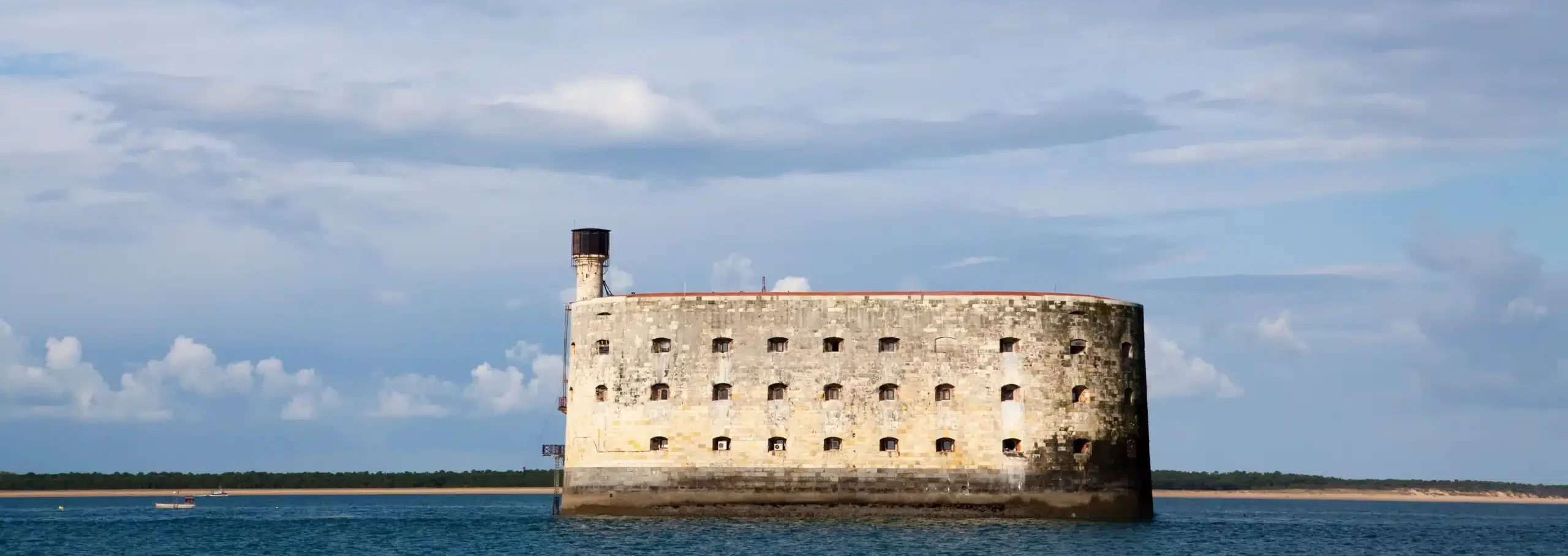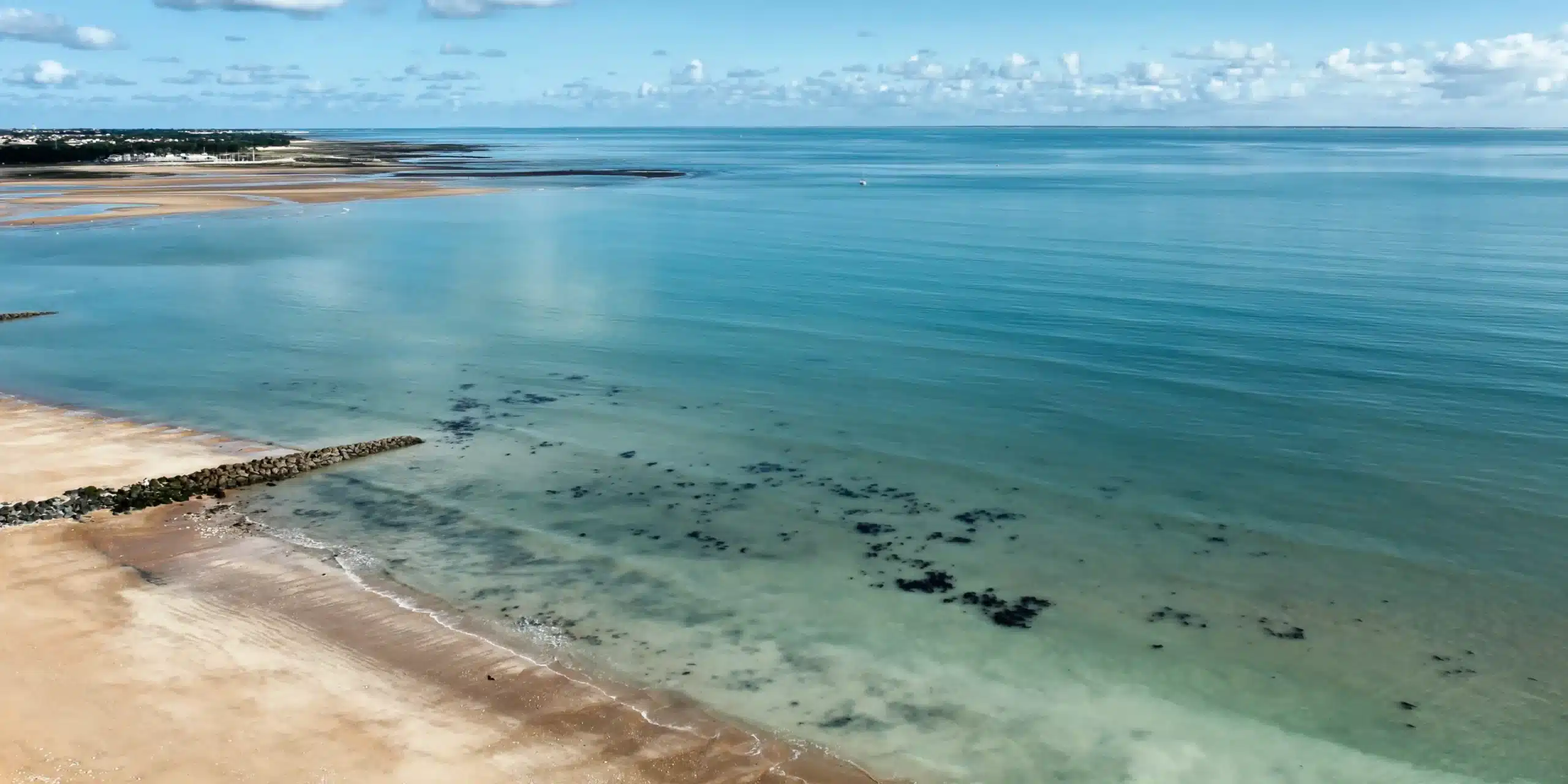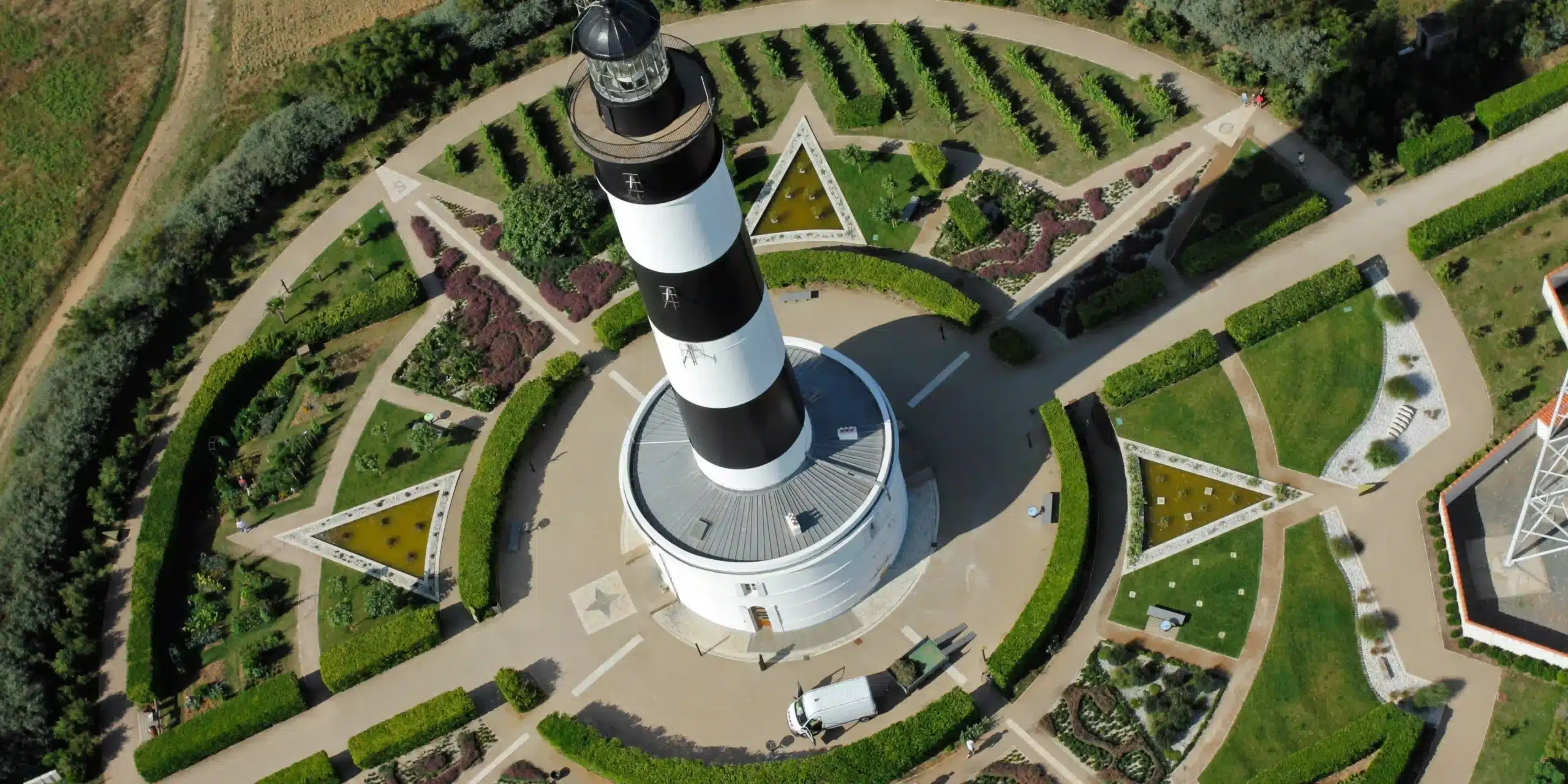Discover Fort Boyard d’Oléron
Fort Boyard is not open to the public, so it’s best to take a cruise from the Ile d’Oléron(Port de Saint-Denis or Boyardville), to get as close as possible to this majestic stone vessel.
Fort presentation
The fort is built on a sandbank known as “longe de Boyard”, which gives the fort its name. Oblong in shape, the fort is 68 meters long on the axis and 32 meters wide, with a floor area of 2065 m2 and a total area of 2689 m2. The surrounding walls rise 20 metres from the foundations. It can be seen from all around, including Fouras and Ile d’Oléron, as well as from La Rochelle and Ile d’Aix on the west coast.
A little history…
Plans to build Fort Boyard date back to the 17th century. As early as 1666, the creation of the Rochefort arsenal, ordered by Colbert, imposed military protection on the area. France was emerging from the Seven Years’ War with England, and the defense of our coasts was paramount.
However, in the face of major technical difficulties, the idea was repeatedly postponed. The great Vauban himself confessed his powerlessness in the face of this challenge, addressing Louis XIV in the following terms: “Sire, it would be easier to grasp the moon with your teeth than to attempt such a task here”.
It was not until the early 19th century that the project was revived. In 1801, a commission made up of engineers from the Génie, the Marine and the Ponts et Chaussées submitted a report to Napoleon Bonaparte recommending the construction of a “stone ship” on the Boyard shoreline, following Montalembert’s ideas on fortifications.
In 1803, First Consul Bonaparte approved the project. Construction began the same year, but was soon halted and resumed in 1809, on the basis of a smaller project. However, the project was again suspended, and it was not until 1848 that the plinth was erected. Construction of the fort took over ten years.
In the mid-19th century, advances in artillery technology rendered the barely completed Fort obsolete. At the end of the Second Empire, it became a military prison, then a state prison for Communards before their transfer to the bagne of New Caledonia.
In the early 20th century, it was abandoned and prey to looters. In 1950, it was listed as a historic monument. Today, it is owned by the Charente-Maritime General Council, and TV game shows are filmed here, making the fort world-famous. A fitting return for the man long nicknamed “the Fort of Uselessness”!





